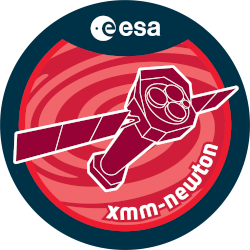

| Proposal ID | 090300 |
| Title | Photoevaporation from small planets orbiting young, active stars (II) |
| Download Data Associated to the proposal | https://nxsa.esac.esa.int/nxsa-sl/servlet/data-action-aio?obsno=0903000301 |
| DOI | https://doi.org/10.57780/esa-dqcmzi6 |
| Principal Investigator, PI | Mr Zhaoxi Zhang |
| Abstract | Our HST and Keck observational campaigns have detected, for the first time,escaping atmospheres around multiple young mini-Neptunes. Photoevaporation fromthese planets shapes exoplanet demographics, but one of the biggest sources ofuncertainty in modelling the outflow is the X-ray and extreme UV spectrum of thestar. Stellar EUV cannot be measured due to interstellar absorption, and mustbe inferred from the X-ray luminosity. We propose a survey to measure the X-rayspectra of four new young, active stars hosting small (<3.5 R_Earth) planets,all of which we are targeting for helium outflow observations with Keck. As abonus, XMMs OM will measure the MUV (~200 nm) flux, which destroys metastablehelium and is therefore critical to modelling the helium signal we observe. |
| Publications |
|
| Instrument | EMOS1, EMOS2, EPN, OM, RGS1, RGS2 |
| Temporal Coverage | 2022-09-12T19:55:15Z/2022-09-13T00:58:35Z |
| Version | 20.08_20220509_1852 |
| Mission Description | The European Space Agencys (ESA) X-ray Multi-Mirror Mission (XMM-Newton) was launched by an Ariane 504 on December 10th 1999. XMM-Newton is ESAs second cornerstone of the Horizon 2000 Science Programme. It carries 3 high throughput X-ray telescopes with an unprecedented effective area, and an optical monitor, the first flown on a X-ray observatory. The large collecting area and ability to make long uninterrupted exposures provide highly sensitive observations. Since Earths atmosphere blocks out all X-rays, only a telescope in space can detect and study celestial X-ray sources. The XMM-Newton mission is helping scientists to solve a number of cosmic mysteries, ranging from the enigmatic black holes to the origins of the Universe itself. Observing time on XMM-Newton is being made available to the scientific community, applying for observational periods on a competitive basis. |
| Creator Contact | https://www.cosmos.esa.int/web/xmm-newton/xmm-newton-helpdesk |
| Date Published | 2023-09-24T00:00:00Z |
| Last Update | 2025-08-04 |
| Keywords | "XMM", "xray spectra", "xray luminosity", "destroys metastable helium", "uv spectrum", "mini neptunes", "stellar euv", "r_earth planets", "active stars", "nm flux", "planets orbiting", "helium signal", "interstellar absorption", "escaping atmosphere", "biggest sources", "active stars ii", "helium outflow", "HST" |
| Publisher And Registrant | European Space Agency |
| Credit Guidelines | European Space Agency, Mr Zhaoxi Zhang, 2023, 'Photoevaporation from small planets orbiting young, active stars (II)', 20.08_20220509_1852, European Space Agency, https://doi.org/10.57780/esa-dqcmzi6 |